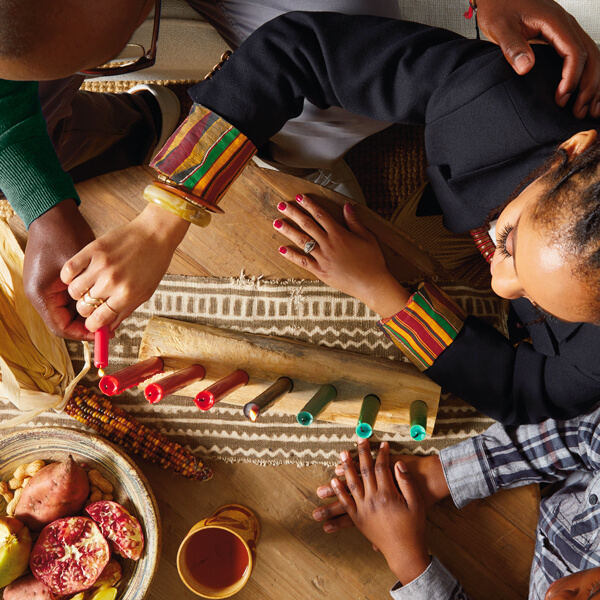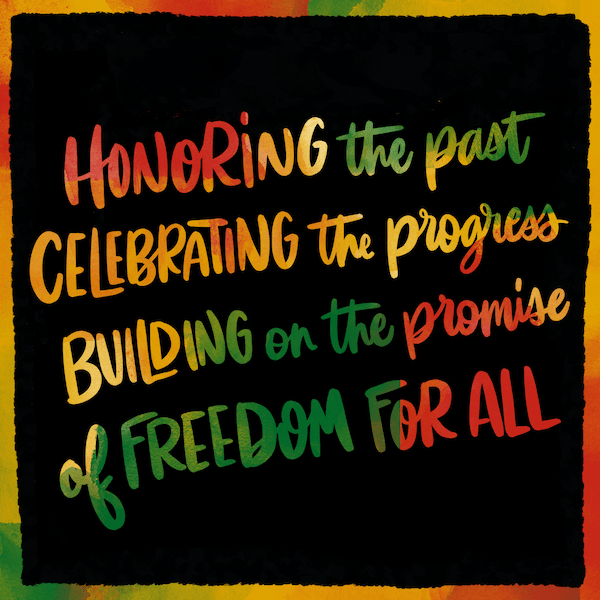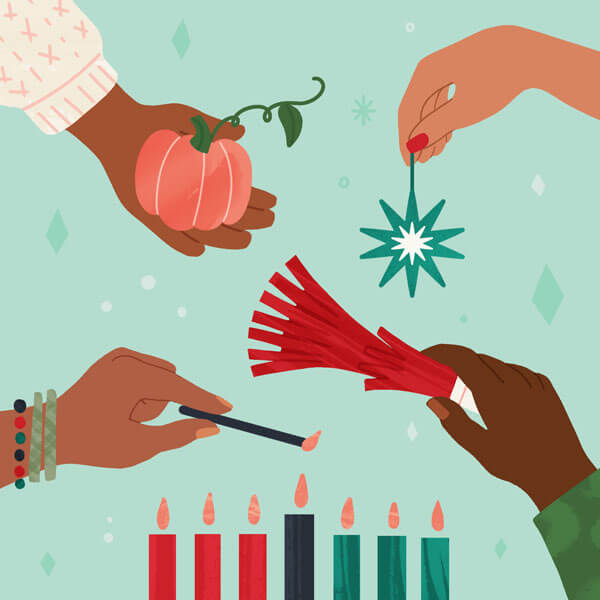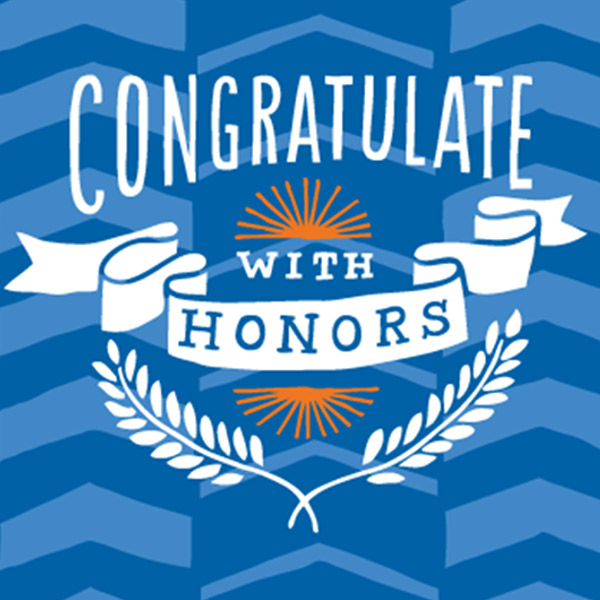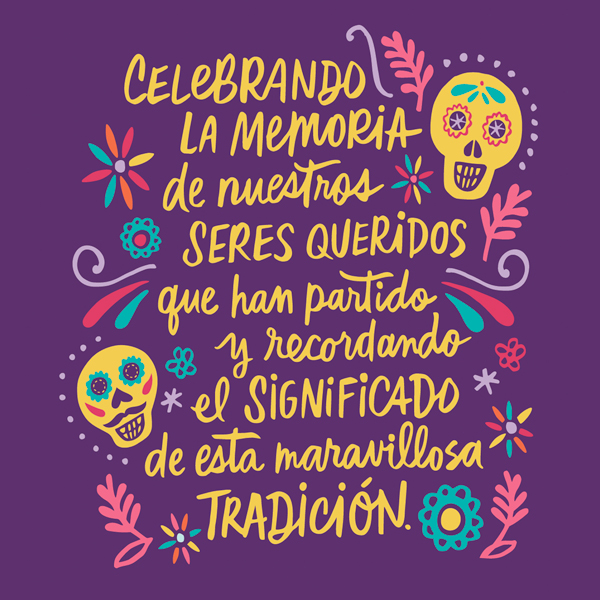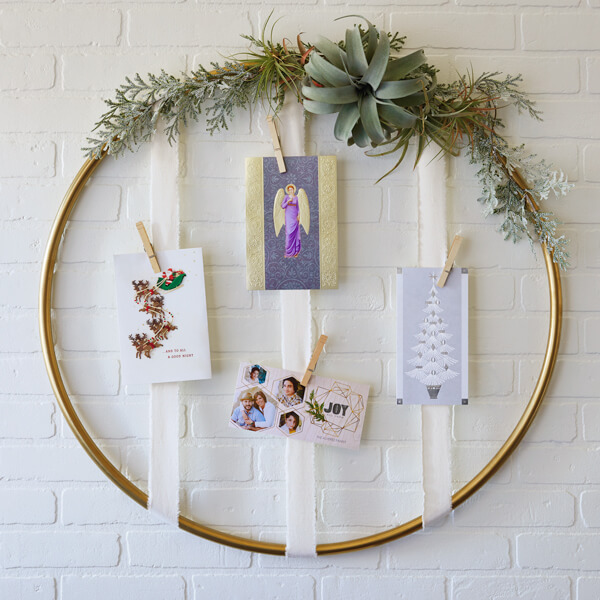What Is Native American Heritage Month?

Native American Heritage Month is a nationwide celebration of the rich history and diverse cultures of America’s Indigenous peoples. It’s a time for members of Indigenous nations to reflect on their own heritage and for all people to learn about and celebrate what Native Americans past and present have contributed to our country.
Inspired? Create and share by tagging @hallmarkstores.
What is the origin of Native American Heritage Month?
Native American Heritage Month was legally declared in 1990, but efforts to set aside a holiday to celebrate Native Americans date back to at least 1912.
- 1912: Anthropologist, historian and activist leader Dr. Arthur Caswell Parker, of the Seneca Nation, convinced the Boy Scouts of America to celebrate a “First Americans Day,” which they did for the next three years.
- 1914: Reverend Red Fox James, of the Blackfeet Nation, traveled from state to state on horseback trying to persuade state governments of the need for a day to honor Native Americans. By December 1915, he had gained endorsements from 24 states, which he presented to the White House. But President Woodrow Wilson’s administration did not declare a national holiday.
- 1915: The annual Congress of the American Indian Association declared the second Saturday in May to be American Indian Day. In 1916, New York became the first state to recognize American Indian Day. Over the years, a few more states would follow suit, though some changed the date to the fourth Friday in September.
- 1970s: The push for a nationally recognized time to honor Native American heritage began to gain serious ground. In 1976, Jerry C. Elliott High Eagle, a NASA physicist and hero of the Apollo 13 mission, authored a resolution to hold a nationwide Native American Awareness Week. Congress passed the resolution, and President Gerald Ford signed it into law. The week was celebrated during October of 1976, and similar weeks were signed into law several years in the 1980s.
- 1990: President George H.W. Bush signed into law a resolution to designate November National American Indian Heritage Month. Similar resolutions have been passed every year since.
Why is Native American Heritage Month celebrated in November?
It’s no coincidence that Native American Heritage Month comes the same month as Thanksgiving.
The first Thanksgiving has long been a story of our nation’s origin, but the stories we learn on Thanksgiving about Indigenous peoples are usually incomplete or even inaccurate.
Native American Heritage Month includes Native American Heritage Day, which is celebrated the day after Thanksgiving. It gives us the chance to focus more fully and deeply on Indigenous peoples’ culture and history.
Another fall holiday important to Native Americans is Indigenous Peoples’ Day, celebrated the second Monday of October as an alternative to Columbus Day. Its goal is to honor Indigenous Americans, rather than glorifying Christopher Columbus, who began the violent colonization of the Americas.
Why is it important to understand Native American history?
Native Americans have called North America home for at least 15,000 years—30 times longer than Europeans, who didn’t settle the Americas until about 500 years ago. Today more than five million United States citizens spread across all 50 states identify on the census as American Indian or Alaska Native.
But they’re seldom given the central roles they deserve in this country’s narrative. Native American Heritage Month brings their stories to the forefront with the intent of expanding knowledge and changing perspectives.
On one hand, that requires acknowledging the hardships and injustices Native Americans have faced, especially at the hands of white settlers and the U.S. government. And it means understanding challenges they face today, including discrimination, stereotyping, cultural appropriation, underreported crimes against Indigenous women, and the highest poverty rate of any racial group in the country.
But on the other hand, Native American Heritage Month is mostly about celebrating the richness and diversity of Native American culture and the many amazing contributions Indigenous Americans have made. It’s a time to learn about beliefs, art forms, music, foods, knowledge, language and stories Indigenous nations keep alive. It’s also a time to celebrate the major contributions Indigenous individuals have made in so many fields, from science and engineering, to conservation, to sports, to government and the military, to art and literature.
If you’re curious to learn about Native American cultures and accomplishments, here is some free online reading to get you started:
- The Encyclopedia Brittanica’s article on North American Indian Languages is a great introduction to the incredible diversity and complexity of the 150 Native American languages spoken in North America today.
- Also interesting is the Wikipedia page on English words from Indigenous languages of the Americas. It’s hundreds of words long and includes many common ones like chipmunk, squash and kayak.
- The educational web site firstpeople.us has compiled over 1400 Native American Legends, organized alphabetically by nation of origin.
- Interested in Native American foods? Here are 25 top recipes you can try.
- Smithsonian Music features a page with many videos of Native American musical performances.
- This Popular Mechanics article, 7 Indigenous Pioneers You Need to Know, is a very brief introduction to Native Americans who have made major contributions to science and technology.
- Wikipedia’s List of Native American sportspeople has links to articles about many major Native American athletes. It’s categorized by sport—notice that the great Jim Thorpe appears four different times. You can also check out their lists of Native American politicians, writers and artists.
How can I celebrate Native American Heritage Month?
You’ll find plenty of free materials online to help you celebrate: The Exhibits and Collections page on the Native American Heritage Month website is a fantastic place to start. It brings together dozens of resources from seven different national organizations and includes music, videos, recipes, blog posts, longer reading materials and more.
PBS has a page dedicated to Native American Heritage Month, featuring both long-form documentaries and short films—all free to watch online—as well as recipes to try.
The National Park Service’s Native American Heritage Month page includes an extensive list of places to visit. It recommends over 100 different sites in the National Park System that are significant to Native American heritage.
Native-American-focused museums are another great place to visit. Probably the largest is Smithsonian’s National Museum of the American Indian, with locations in New York City and Washington, DC. There also are more than a hundred Native American museums in the United States, so odds are you can find one close to home.
Contributors
We’re grateful to Hallmark’s Lawrence Production Center employees from the Cheyenne, Kiowa, Cherokee and Confederated Tribes of the Yakama Nations for their invaluable contributions to this post.
You may also like
See more-
Christmas Sweet dreams, Santa!
Catch Santa napping on the job with this Snoring Santa Keepsake Ornament featuring sound and motion. With every snore...
-
Kwanzaa What is Kwanzaa?
What is Kwanzaa? A festival of lights rich in African symbolism, it takes place each year from December 26th through ...
-
Christmas Advent calendar activities for adventurous families
It’s time to start the countdown. Maybe it’s about being mindful…or counting your blessings…or preempting your kids a...
-
Summer Ways to celebrate Juneteenth
While Juneteenth was officially recognized as a federal holiday in 2021, this pivotal moment in history has been cele...
-
Christmas Christmas and Kwanzaa: Keeping family holiday traditions and finding your own
Whether you’re single or starting a family, religious or agnostic, someone who celebrates Christmas and Kwanzaa or ju...
-
Halloween Make ghosts and goblins feel right at home this Halloween
Light up your home with haunting Halloween seasonal decor. 🎃👻 Shop now at Hallmark Gold Crown stores or at Hallmark.com.
-
Halloween No scaredy cats around here!
When this black cat crosses your path, you know fun can't be far behind. 😻 🧙♀️ Shop the Zip-A-Long Cat in Hallmark G...
-
Halloween While you’re waiting for The Great Pumpkin this Halloween…
Fly around the pumpkin patch with Zip-a-long Snoopy! 🎃 Shop more frightening finds in Hallmark Gold Crown stores and ...
-
Halloween Light up the night with frightful fun!
Could it be? Could it be!? Yes it is! It’s the Peanuts® Snoopy and Woodstock Halloween figurine! 🎃 🐶 Find it and more...
-
Halloween Where cozy meets mischief and magic
Make some magic this Halloween with this Hocus Pocus hooded blanket. 🧙♀️👻Find more Halloween essentials in Hallmark ...
-
Gifting Relive a favorite from your childhood!
Fill your home with a few small joys inspired by Disney’s “It’s a Small World” 🩵🎎 Shop the collection at Hallmark Gol...
-
Halloween Which house will you be sorted into?
The Harry Potter™ Sorting Hat™ Mug plays sound whenever you lift the lid. Find this chatty mug in Hallmark Gold Crown...
-
Encouragement How to support caregivers
It’s often hard to know how to support a caregiver. Most caregiving checklists out there hit the major topics like me...
-
Love 50 different ways to say I love you
You don’t need to wait for a special occasion to remind that certain someone how much he or she is loved. Spice up yo...
-
Graduation 15 graduation quotes
Celebrate your favorite grad’s milestone with the wit and wisdom of Hallmark writers, fans and others. We’ve rounded ...
-
Congratulations How to congratulate someone
Congratulating others is easy and fun, right? Like when your friend worked really hard and got that awesome job makin...
-
Care & Concern Be more caring with a kindness journal
It's obvious the world could use more kindness. So this year, why not make "be more caring" your number one resolutio...
-
Fall Día de Muertos: A celebration of life and love
Día de Muertos, Day of the Dead, is a holiday originally celebrated in the southern and central parts of Mexico and i...
-
Card Ideas Card messages for kids: What to write in a kid’s holiday card and more
My 3-year-old was having a hard time at preschool drop-off. Dragging his feet. Asking to stay home. This went on a fe...
-
Christmas 6 Creative Christmas Card Display Ideas
Holiday card season is here: Our mailboxes are about to fill up with festive envelopes with pretty stamps and familia...


